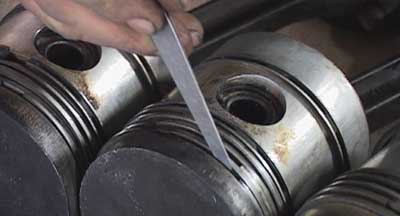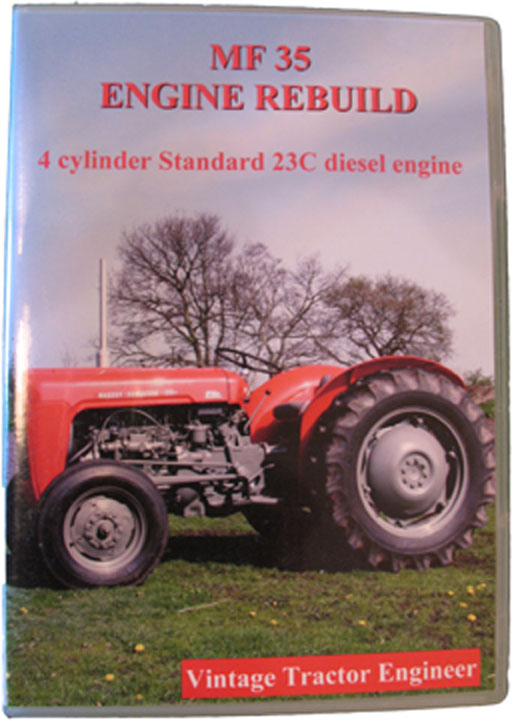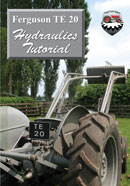Want to check out our tractor maintenance videos? Click here to see what we've got!
Different models of tractor obviously have slightly different fuel systems, but all types need to be free of air in the fuel system for it to work efficiently. Most vintage tractors have the luxury of a fuel tank fitted above the engine (unlike many classic or modern tractors), this gives the aid of gravity during the bleeding operation.
Normally the fuel system consists of a tank followed by a glass sedimentary bowl, lift pump, one or more fuel filters, injection pump and then high pressure lines to each injector. There may also be a connection to a thermo-start device (manifold heater).
Make sure there is sufficient fuel in the tank and that the fuel taps are turned on (believe it or not this has been overlooked before!)
The first task to remove the air is to open the bleed screws on top of the filters and pump the lift pump until clean bubble free fuel is expelled. Close the bleed screws in turn, whilst maintaining a small fuel flow with the lift pump.
Next, identify and open the bleed screws on the injector pump (there may be more than one). Pump the lift pump until clean bubble free fuel is expelled and close the screws in turn as they run free of air.
Undo one or more injector pipes at the injector end. With the stop control in the run position and the throttle wide open, turn over the engine on the key until fuel can be seen pulsating from each pipe. The pipes can then be re-fitted.
If a thermo-start is fitted, the fuel line must be slackened and bled by pumping the lift pump.
The tractor is now ready to start. If you are unsuccessful, there may still be air in the system and the procedure must be repeated.
Beware, in step 3 the fuel is potentially under extreme pressure. There is a danger of the fuel entering the skin and causing blood poisoning.
An inability to bleed the system could be caused by any one or a combination of the following.
- Blocked pipes
- Blocked filters
- Inoperative lift pump
- Frozen or waxed fuel
- Split suction pipes allowing air in
- Damaged injector pump
- Sheared injector pump drive
Sometimes it is necessary to turn the engine to a different postition to allow manual operation of the lift pump.
Watch a video of how to bleed a tractor fuel system in the window below.
If your internet connection will not run this video, then see how to bleed the fuel system here.






“Sometimes it is necessary to turn the engine to a different postition to allow manual operation of the lift pump.”
Can you explain please ?
Thank you
Bleeding TEF20
After nephew let my TEF20 run out of diesel, it dragged all the crud from the fuel tank into the reserve tank and the diesel filters. once these had been removed, cleaned out and reassembled, it needed bleeding. I just wanted to impart a little trick an old-timer taught me some 25 years ago when bleeding diesel fergies:
remove the bleed screws from the injecter unit. remove the fuel cap from the tank and place a clean, folded cloth over the mouth of the tank. then put your mouth to the cloth and blow. a couple of breaths should see foaming bubbles come streaming out of the injector bleed screw holes followed by nice clean red diesel. once no bubbles appear, replace bleed screws and fire her up.
Whilst i do not recommend this method, on health grounds alone, it does save a lot of faffing about 🙂
G’Day, Y’All –
Just wanted to say THANKS!!! ! for putting this up. I have a ’79 Lister ST3 diesel generator and was just hoping all I had to do was keep cranking it. I’ve been looking online for hours now, and this clip really helped. Let me know if there’s someplace I can tip Y’All – I’ll give ya $20 easy!
Appreciatively,
Steve Bracy